Last Updated on July 11, 2024 by teamobn
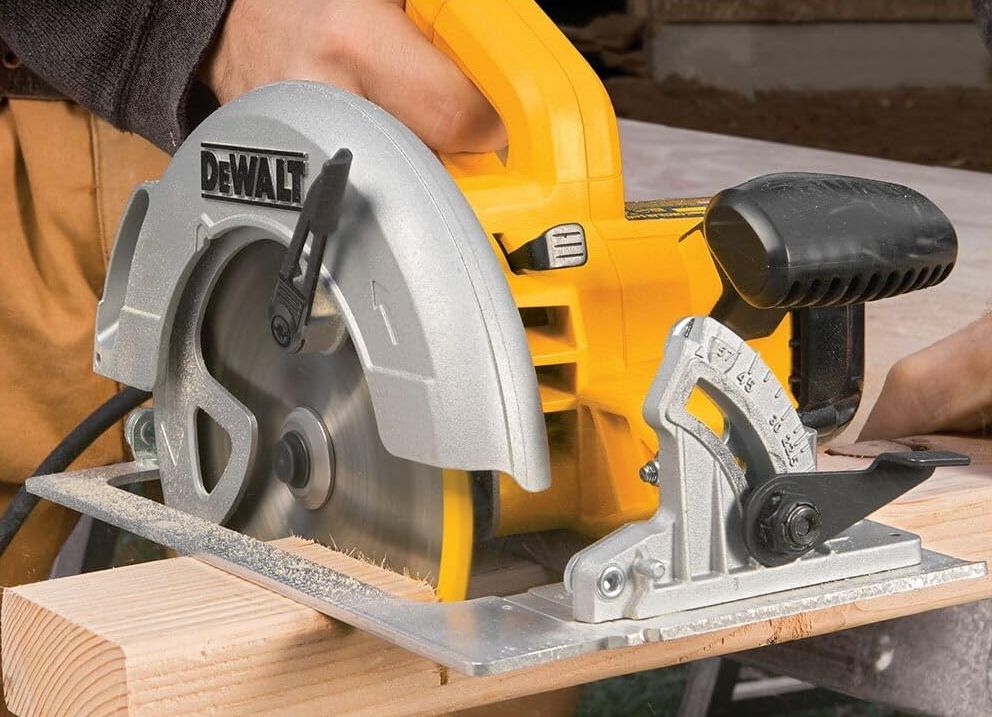
Using a circular saw is essential for a wide range of DIY projects and professional tasks. However, the power and speed of a circular saw also make it a tool that demands respect and careful handling to ensure safety.
In this article, we’ll explore essential circular saw safety tips to help you use the power tool with confidence and avoid common hazards. Knowing these safety precautions may drastically lower your chance of mishap and guarantee a more seamless use of your circular saw, regardless of your level of experience with woodworking.
Contents
Important Circular Saw Safety Tips
Understanding Your Circular Saw
Before you begin any project with your circular saw, it’s crucial to familiarize yourself with its components and how they function. A circular saw typically consists of a motor, a blade, a base plate, and safety features such as blade guards and safety switches. Knowing each part’s role not only enhances your ability to operate the saw effectively but also plays a significant role in safety.
Key Components:
- Motor: This is the power source of your circular saw, driving the blade to rotate at high speeds. Understanding its power output is important for handling the saw safely under different loads.
- Blade: Circular saws can use various blades, each designed for specific materials and cuts. Selecting the appropriate blade and ensuring it is sharp and intact is crucial.
- Base Plate: Also known as the shoe, this part stabilizes the saw against the workpiece, ensuring straight cuts. It should be kept flat and true to ensure accuracy.
- Blade Guards: These are critical safety features designed to cover the blade when it’s not engaged in cutting, reducing the risk of accidental cuts.
- Safety Switches: These include power triggers and lock-off buttons that prevent the saw from starting unintentionally.
Reading the User Manual:
One of the most overlooked circular saw safety tips is the importance of reading the user manual. Each circular saw model might have unique features or recommended operational guidelines. The manual provides crucial information on assembly, use, maintenance, and safety precautions specific to your model. Understanding these can prevent misuse and accidents, ensuring a safer work environment.
By starting with a thorough understanding of your circular saw, you ensure that you’re not just ready to cut, but also equipped to handle your tool in the safest possible manner. Familiarity with your tool’s specific characteristics and respecting its capabilities are foundational to safe operation.

Preparation Before Cutting
Preparing properly before you start cutting with a circular saw is crucial for both the quality of your work and your safety. This stage involves several key steps that ensure the saw is in optimal condition and the material is secured correctly. These circular saw safety tips can help prevent accidents and ensure smoother, more accurate cuts.
Inspecting the Circular Saw
Before you use your circular saw, conduct a thorough inspection. Check the saw’s general condition, ensure all screws and fittings are tight, and confirm that the blade guard moves smoothly. This is also the time to verify that the blade is sharp and correctly installed. A well-maintained saw is fundamental to following circular saw safety tips, as it reduces the likelihood of malfunction during use.
Choosing the Right Blade for the Material
Selecting the appropriate blade for the material you are cutting is essential for both safety and efficiency. Different blades are designed for wood, metal, or masonry, and using the wrong type can lead to dangerous kickbacks or blade damage. Always refer to the manufacturer’s guidelines for blade selection—this adherence to circular saw safety tips not only extends the life of your saw but also enhances your safety.
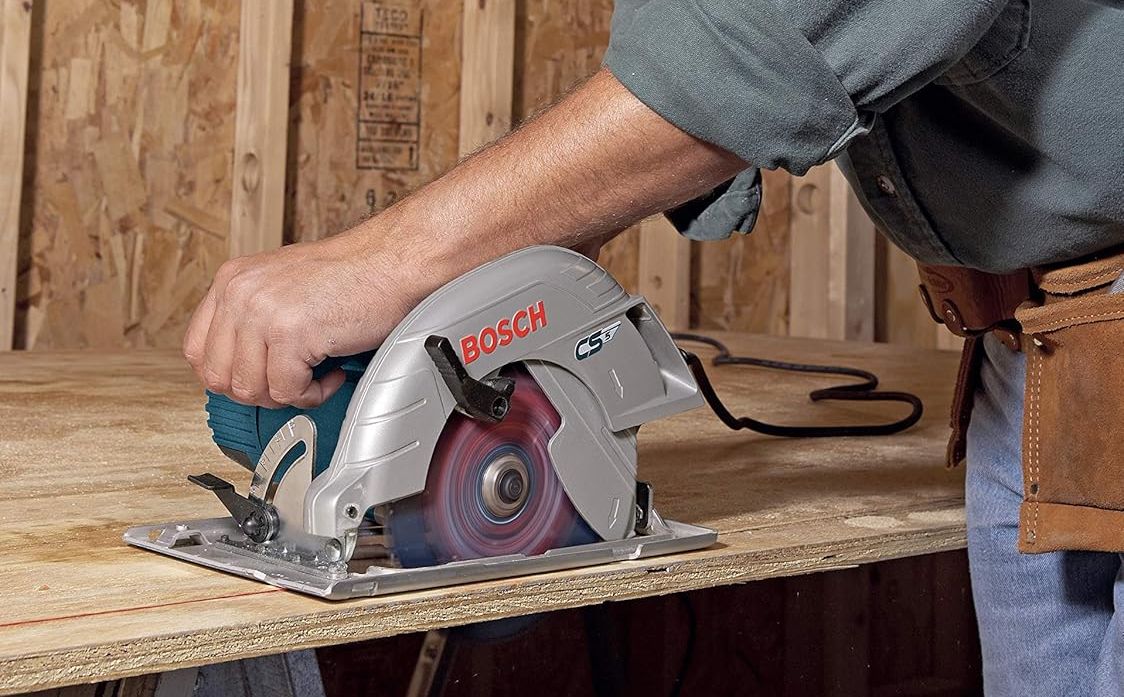
Securing the Material Properly
Ensure that the material you’re cutting is firmly secured using clamps or a vise. Unstable materials can shift during cutting, increasing the risk of inaccuracies or injuries. Proper material support is one of the crucial circular saw safety tips, as it directly influences the control you have during the cutting process.
Setting the Correct Depth of Cut
Before beginning your cut, adjust the blade depth so that it is just slightly greater than the thickness of the material you are cutting. This not only improves the efficiency of your cuts but is also a vital circular saw safety tip, as it minimizes kickback and blade exposure during operation.
Checking Electrical Safety
Ensure that all power cords and connections are secure and undamaged before using the saw. Frayed or damaged cords can pose a serious risk, so addressing these issues immediately aligns with essential circular saw safety tips.
If you need an extension cord, make sure it is suitable for the power requirements of your saw to prevent overheating and potential electrical hazards.

Establishing a Clear Work Path
Before you start, plan your cutting path and ensure nothing is obstructing your movement. This preparation not only leads to more accurate cuts but also enhances safety by reducing the likelihood of unexpected interruptions.
Creating a Safe Work Environment
Ensure your work area is well-lit. Good visibility is crucial for safe operation and accuracy, making this an important circular saw safety tip.
Always have a first aid kit accessible in your work area. While it’s best to avoid injuries altogether, being prepared to handle them quickly is an essential safety practice.
You create safe conditions for a productive and secure cutting session by meticulously setting up your workplace and tools. In addition to helping to attain the finest outcomes, this preparation reduces any risks that may arise from utilizing a strong tool like a circular saw.
Proper Safety Gear
It’s not merely a precaution but an absolute requirement to wear the proper safety gear when using a circular saw. It’s critical to wear enough protection because of the high speeds and possibility of flying debris. It’s important to emphasize that having the right equipment might mean the difference between a small fright and a catastrophic injury when it comes to circular saw safety tips.
Essential Safety Wear
- Goggles: Protect your eyes from sawdust, debris, and any fragments that might eject from the cutting material. Eye protection is perhaps the most critical element of circular saw safety tips.
- Gloves: Wear sturdy gloves to improve your grip on the saw while protecting your hands from cuts and abrasions.
- Ear Protection: Particularly in confined spaces, circular saws can make an extremely loud noise. Prevent any hearing damage by wearing earplugs.
Additional Safety Equipment to Consider
- Dust Mask or Respirator: If you’re working in a poorly ventilated area or with materials that produce harmful dust (like MDF or hardwood), a dust mask or respirator is crucial.
- Steel-toed Boots: For extra protection, wear steel-toed boots to safeguard your feet from falling objects or accidental slips of the saw.
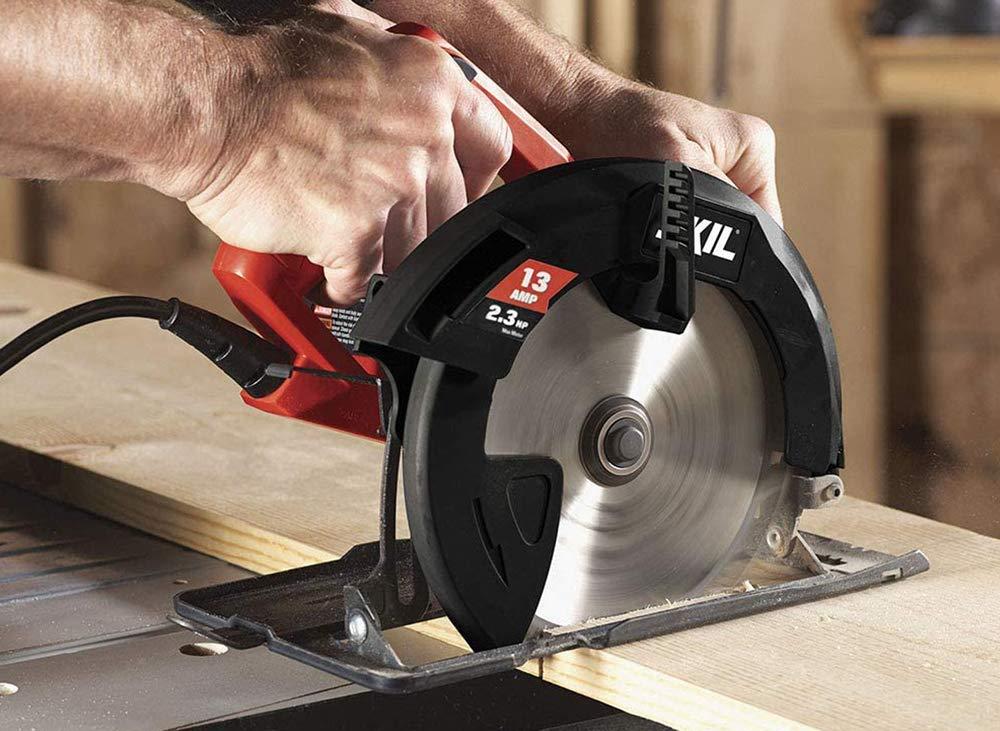
Wearing the appropriate safety gear is a fundamental part of circular saw safety. It provides you with the necessary protection and peace of mind. This allows you to focus more on precise cutting and less on avoiding injuries, making your woodworking both safer and more enjoyable.
Handling and Operation
Proper handling and operation of this power tool are vital for both achieving precise cuts and maintaining a safe working environment. These circular saw safety tips should be at the forefront of your mind every time you power up the tool. Correct practices not only prevent injuries but also ensure that your projects turn out just as planned.
Below are circular saw safety tips for handling and using the tool.
Correct Handling Techniques for Stability and Control
- Proper Grip and Stance: Hold the saw with both hands (when possible) and keep your body positioned to the side of the cutting path to avoid kickback injuries. Your stance should be stable and balanced to maintain control throughout the cut.
- Use Both Hands: Always use both hands to operate the saw, if the design allows it. One hand should be on the trigger handle while the other stabilizes the front knob. This dual-handed approach is a crucial circular saw safety tip that enhances control and precision.
Maintaining Focus and Avoiding Distractions
- Clear Work Area: Ensure your work area is free of unnecessary tools or debris that could cause you to trip or distract you. A clean workspace is a safe workspace.
- Stay Alert: Never use the circular saw when you are tired or under the influence of drugs or alcohol. Keeping your mind alert and focused is one of the essential circular saw safety tips, as distraction can lead to serious accidents.
Techniques for Straight and Angled Cuts
- Straight Cuts: Use a guide rail or a straight edge clamp to help keep your saw on track. This not only improves the accuracy of your cuts but also adheres to circular saw safety tips by helping to control the saw’s path.
- Angled Cuts: When making bevel cuts, adjust the base plate to the correct angle, ensure it is securely locked, and proceed with the cut slowly. Rushing through angled cuts can compromise both the safety and quality of the cut.
By following these circular saw safety tips, you ensure that each operation is conducted with the utmost precision and care. This approach not only protects you from potential hazards but also results in cleaner, more professional-looking cuts. Always prioritize safety to maintain efficiency and excellence in your work.
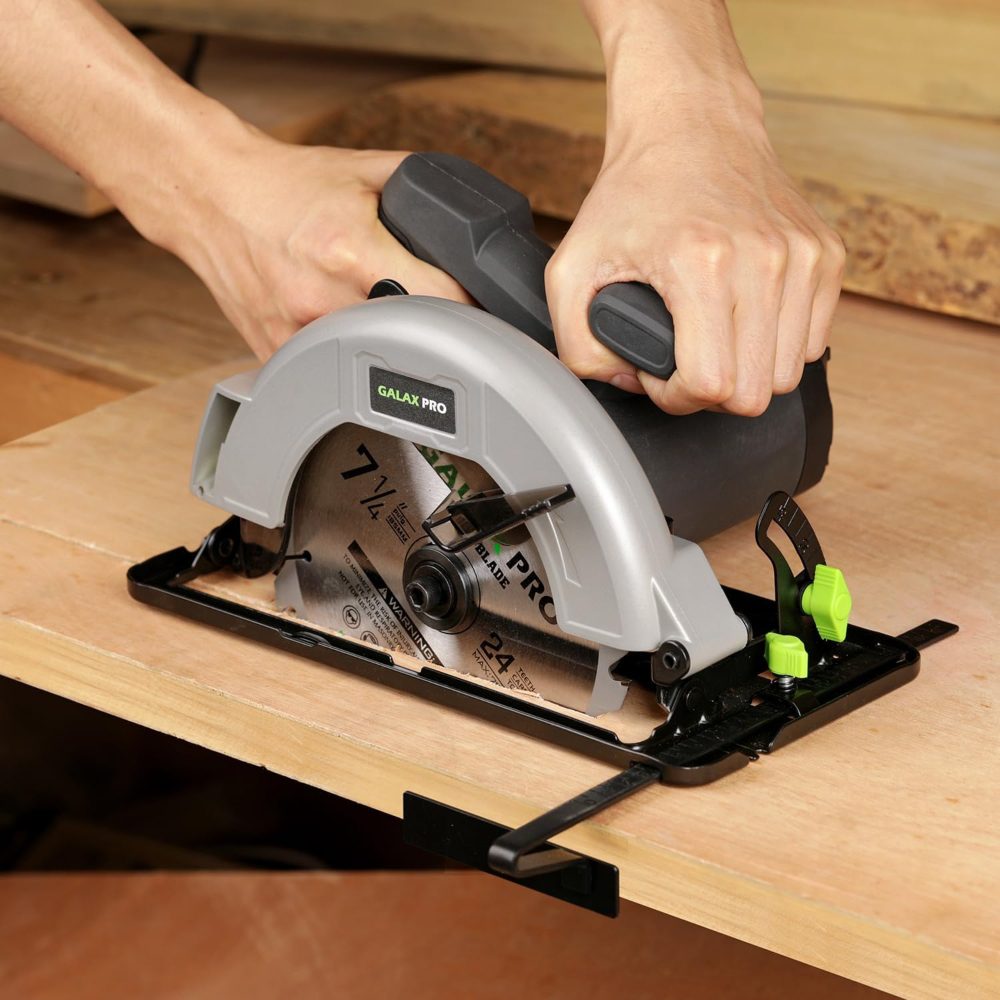
Common Mistakes to Avoid
Using a circular saw requires attention to detail and adherence to safety protocols. Awareness of common mistakes can dramatically improve your safety and the quality of your work. By emphasizing circular saw safety tips, you can avoid these pitfalls and ensure a safer working environment.
Overriding Safety Features
- Never Tamper with Safety Guards: Safety guards are designed to protect you from the spinning blade during operation. Removing or manipulating these guards exposes you directly to potential harm.
- Bypassing Lock-off Buttons: These are designed to prevent the accidental starting of the saw. It’s crucial to use these features as intended; bypassing them can lead to unintended operation, which is a violation of basic circular saw safety tips.
Forcing the Saw Through the Material
- Let the Saw Do the Work: Pushing the saw too hard into the material can cause the motor to overheat and the blade to bind, which may lead to kickback—a dangerous situation. Observing this circular saw safety tip not only extends the life of your saw but also protects you from potential accidents.
- Maintain Steady Feed Speed: Use a consistent, steady speed to feed the saw through the material. This practice not only ensures smoother cuts but also aligns with critical circular saw safety tips that prioritize controlled operations.
Ignoring Signs of Blade Wear or Damage
- Regular Blade Checks: Always check the blade for signs of wear or damage before and after each use. A damaged or dull blade can drastically increase the risk of kickback and other accidents.
- Replace When Necessary: If you notice any issues with the blade, replace it immediately. Using a compromised blade not only affects the quality of your cuts but also disregards important circular saw safety tips designed to protect you.
Keeping these circular saw safety tips in mind and avoiding these common mistakes can enhance both your safety and the efficiency of your work. Always prioritize proper operation and maintenance practices to safeguard yourself and achieve the best results with your circular saw.
Maintenance and Storage
Proper maintenance and thoughtful storage of your circular saw are essential for preserving its functionality and extending its lifespan. These practices are not just about keeping your tool in good working order; they are also critical circular saw safety tips that help prevent accidents caused by malfunctioning or poorly maintained equipment.
Regular Maintenance Checks
- Clean After Use: Remove any dust and debris from the saw after each use. A clean saw is less likely to have operational issues, which is a key circular saw safety tip.
- Inspect for Wear and Damage: Regularly check the blade, cord, and any mechanical parts for signs of wear or damage. Replace any components that are not in good condition to ensure the saw operates safely and efficiently.
Proper Storage Practices to Prolong Tool Life
- Store in a Dry, Safe Place: Moisture can cause rust and corrosion, so store your circular saw in a dry area. Additionally, make sure it’s out of reach of children and unauthorized persons to comply with circular saw safety tips.
- Use a Protective Case: If available, store the saw in a protective case to shield it from dust and physical damage. This also helps in keeping all parts secure and in one place, making it easier to maintain the tool’s condition.
These guidelines for maintenance and storage are important circular saw safety tips. They not only keep your tool in prime condition but also ensure it’s safe to use every time. Regular attention to these details can make a significant difference in both performance and safety.
Emergency Procedures
When operating a circular saw, it’s vital to be prepared for any potential accidents or emergencies. Knowing what to do in an emergency is not only a crucial aspect of workplace safety but also an essential component of circular saw safety tips. Implementing these procedures can significantly reduce the severity of injuries and provide crucial assistance in a timely manner.
Steps to Follow in Case of an Accident
- Stop the Tool Immediately: If an accident occurs, the first step is to turn off the circular saw to prevent further injury. This immediate action is a fundamental circular saw safety tip.
- Administer First Aid: Apply basic first aid as necessary. For cuts, apply pressure to stop bleeding and cover the wound with a clean dressing. For more serious injuries, seek medical assistance immediately.
- Report the Incident: Ensure that all accidents are reported to the appropriate personnel or authorities. Reporting helps in documenting the incident for future safety measures and is a responsible practice under circular saw safety tips.
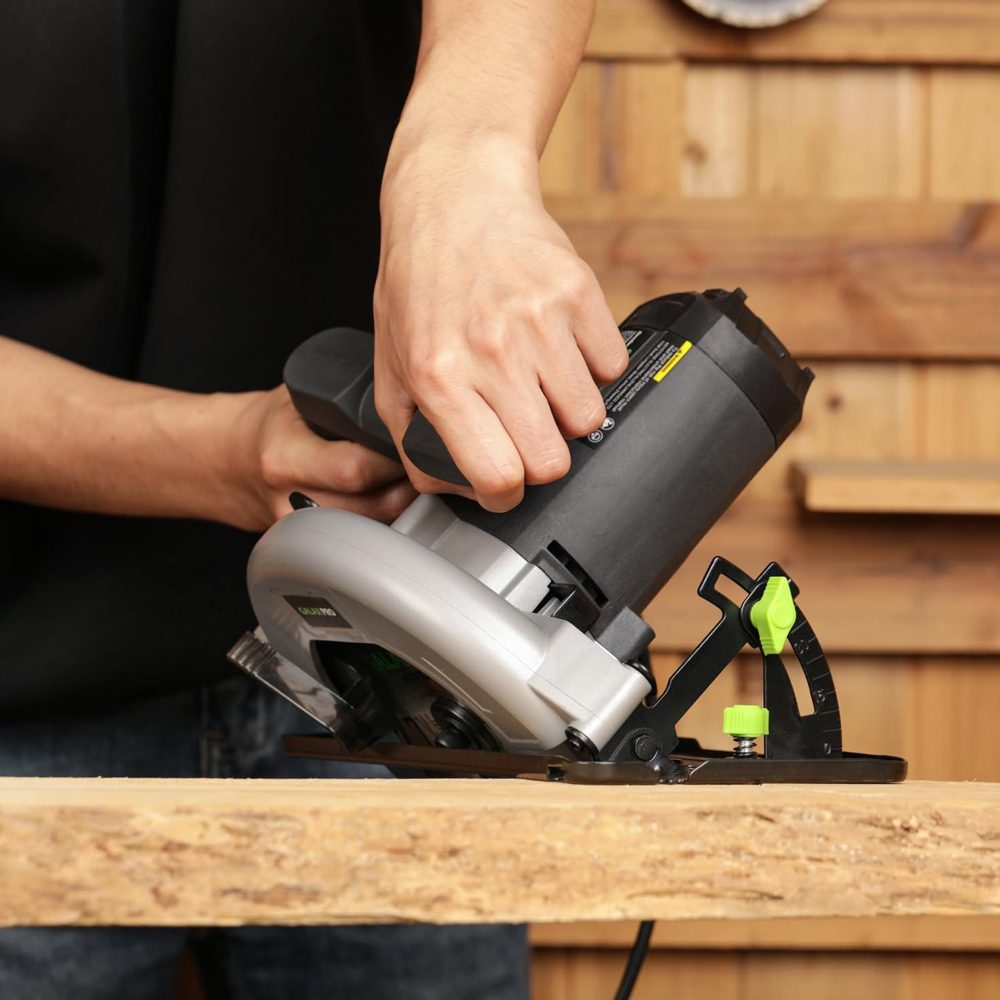
When and How to Seek Immediate Help
- Call Emergency Services: If the injury is severe, call for emergency medical services right away. Do not delay, as prompt medical attention can be crucial.
- Stay Calm and Clear: While waiting for help, keep the injured person calm and clear the area of any hazards. Ensuring that the environment is safe for both the injured person and the medical responders is a key circular saw safety tip.
Preventative Measures to Avoid Future Accidents
- Review Safety Protocols: After an incident, review and reinforce safety protocols to prevent future accidents. This reflection is an important aspect of circular saw safety tips.
- Conduct Safety Trainings: Regular safety training sessions can be invaluable in preventing accidents. Training should cover the proper operation of the circular saw, as well as what to do in case of an emergency.
Establishing and following these emergency procedures will reinforce critical circular saw safety tips that protect not only yourself but also your colleagues in the work environment. Safety and results can vary greatly depending on one’s readiness for emergencies and ability to act quickly.
Conclusion
Proper adherence to circular saw safety tips is essential for ensuring your safety and achieving precise results in any cutting project. Familiarity with your tool, correct operation practices, and the use of appropriate safety gear can dramatically reduce the risk of accidents. Always prioritize these safety guidelines to maintain a secure and efficient work environment.








